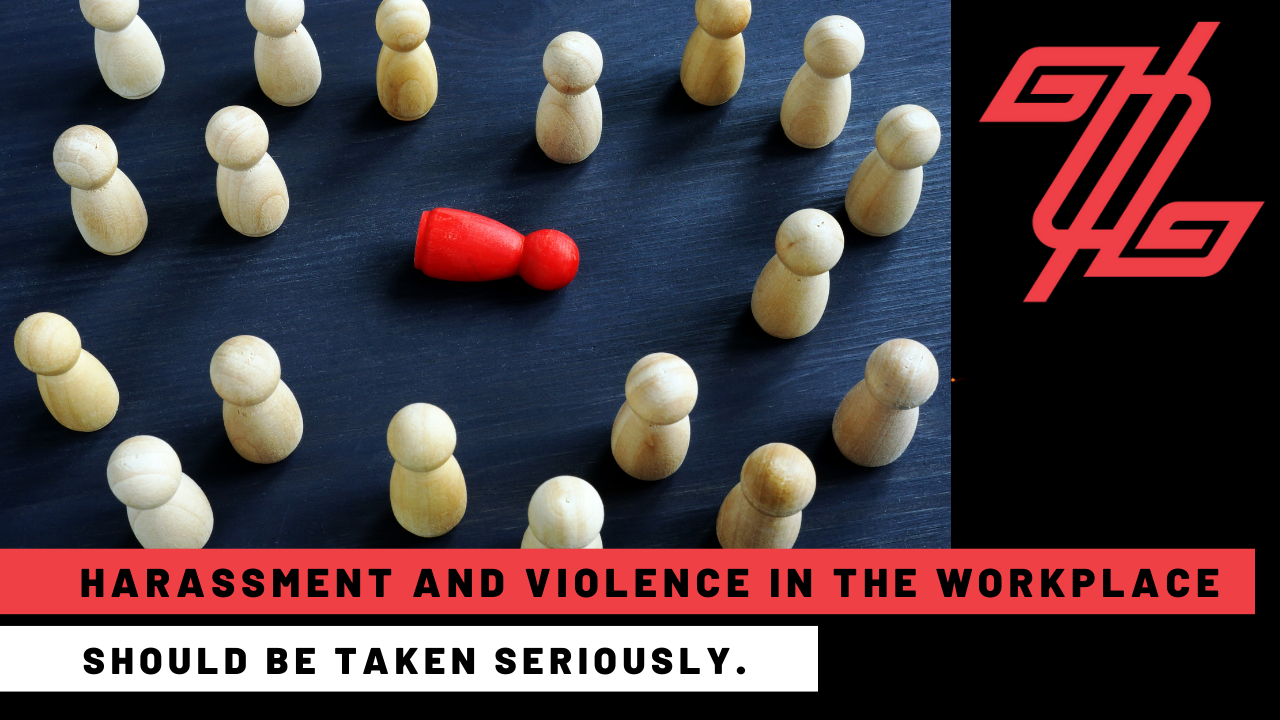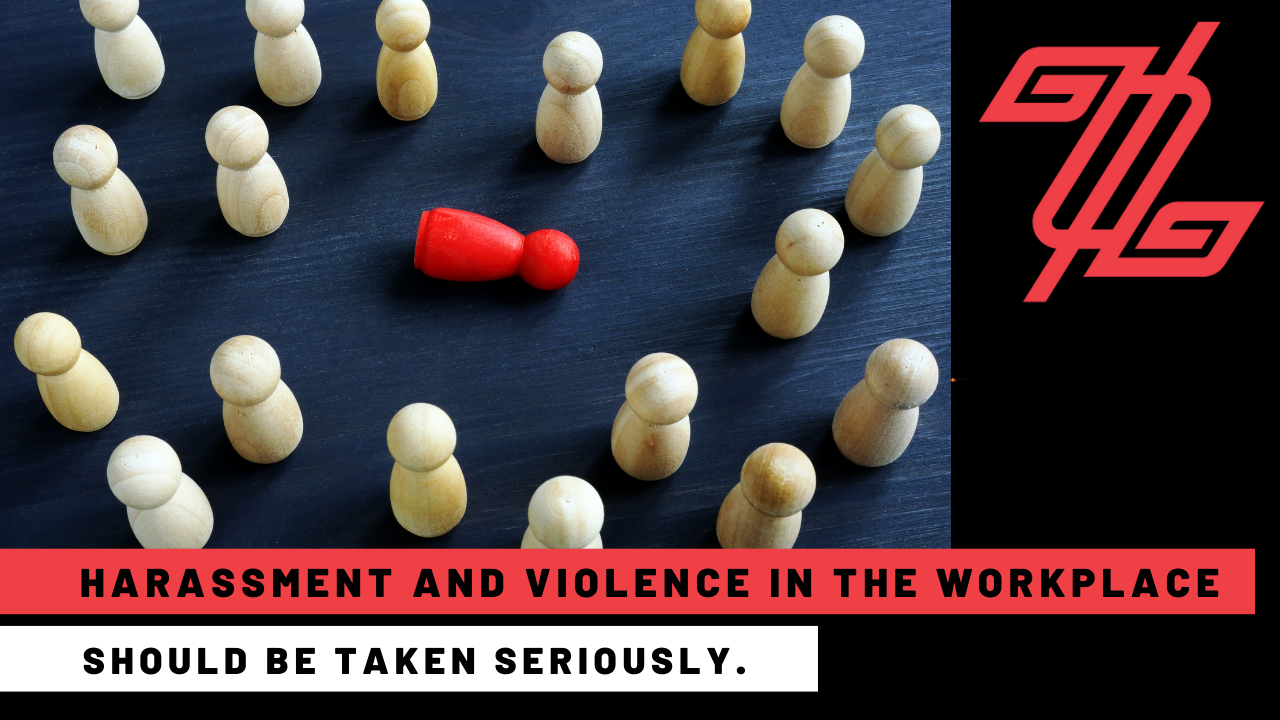Harassment and Violence in the Workplace should be taken seriously.

Given the recent events at the Oscars and how easily the situation was made out to be a joke all over social media, we thought a brief refresher on the severity and consequences harassment and violence have on both employees and employers was in order. The pandemic has brought on additional stress for most over the last two years, and concern over employees' mental wellbeing is at an all-time high. Added to this, the risk of business interruption and legal ramifications is higher than ever before. It is important for employers to have a prevention plan in place to help protect their employees from these dangers. In this blog post, we will define harassment and violence and discuss how they affect workplace culture. We will also provide tips on how to prevent these behaviours from happening in your workplace.
Violence & Harassment Defined
Harassment is any unwanted conduct that has the purpose or effect of creating a hostile, offensive, or intimidating work environment. Harassment can be verbal, physical, or sexual in nature, and it can occur between employees or between employees and customers. Harassment is a form of discrimination and it is against the law.
Physical harassment includes any unwanted physical contact, such as slapping, pushing, or grabbing. Sexual harassment includes any unwanted sexual attention, such as touching, groping, or making sexual comments. Verbal harassment includes any type of offensive language or behaviour, such as name-calling or shouting.
Violence is any physical action that results in harm or the threat of harm. Violence can occur between employees, between employees and customers, or against employees. It can be an intentional act or an accident
Violence & Harassment can be very damaging to employees and can lead to a number of negative outcomes, such as:
- Stress: Harassment and violence can cause employees to feel stressed and anxious. This can lead to health problems, such as high blood pressure, headaches, and stomach problems.
- Depression: Harassment and violence can cause employees to feel depressed and hopeless. This can lead to problems at home and at work.
- Substance Abuse: Harassment and violence can lead to employees using drugs or alcohol as a way to cope. This can lead to addiction and other health problems.
- Post-Traumatic Stress Disorder (PTSD): Harassment and violence can cause employees to develop PTSD. This is a condition that can cause flashbacks, nightmares, and extreme anxiety.
- Anxiety: Harassment and violence can cause employees to feel anxious and scared. This can make it difficult to focus on work and can lead to health problems.
- Lowered morale: Harassment and violence can cause employees to feel unhappy and discouraged. This can lead to lowered productivity and job dissatisfaction.
- Reduced productivity: Harassment and violence can lead to employees being less productive at work. This can impact the company’s bottom line.
- Quitting or transferring jobs: Harassment and violence can cause employees to leave their jobs or transfer to other departments. This can lead to a high turnover rate and increased training costs.
-Loss of business reputation: Harassment and violence can lead to a loss of business reputation. This can impact the company’s ability to attract new customers and employees.
-Legislative fines and penalties: Harassment and violence can lead to businesses being fined by government organizations. These fines can be very costly and can impact the company’s bottom line
-Human rights & Jail time: Harassment and violence can lead to employees filing human rights complaints. This can result in the company being investigated and charged with criminal offences.
Employers should take steps to prevent harassment from occurring in their workplace. This can be done by creating a policy against harassment, educating employees about what constitutes harassment, and establishing a complaint process
Prevention in the workplace
With the above-noted impacts, Harassment and violence prevention should be a key focus for all businesses.
There are a number of things employers can do to prevent harassment and violence from happening in their workplace. These steps include:
-Creating a policy against harassment and violence (zero tolerance)
-Creating a formal hazard assessment to deal with harassment and violence
- Educating employees about what constitutes harassment and violence ( formal seminars or inhouse-training, 3rd party training providers)
- Training employees on how to respond to Harassment and Violence (think off all the scenarios for your business. A store clerk might have different H&V hazards than a lab technician)
- Promoting a safe workplace culture ( Lead by example, treat others with respect at all times)
By taking these steps, employers can help create a safe and healthy work environment for their employees.
Conclusion
Harassment and violence can have a negative impact on employees and employers alike. It is important for employers not to take these matters lightly, everyone has the right to harassment and a violence-free workplace. Employers need to have a prevention plan in place to help protect their employees from these dangers. In this blog post, we have defined harassment and violence and discussed how they affect workplace culture. We have also provided tips on how to prevent these behaviours from happening in your workplace. If you have been a victim of workplace harassment or violence, there are steps you can take to protect yourself. You can contact your union representative or human resources department for help. You can also file a complaint with the State, Provincial, or Federal government.
Thank you for reading!

